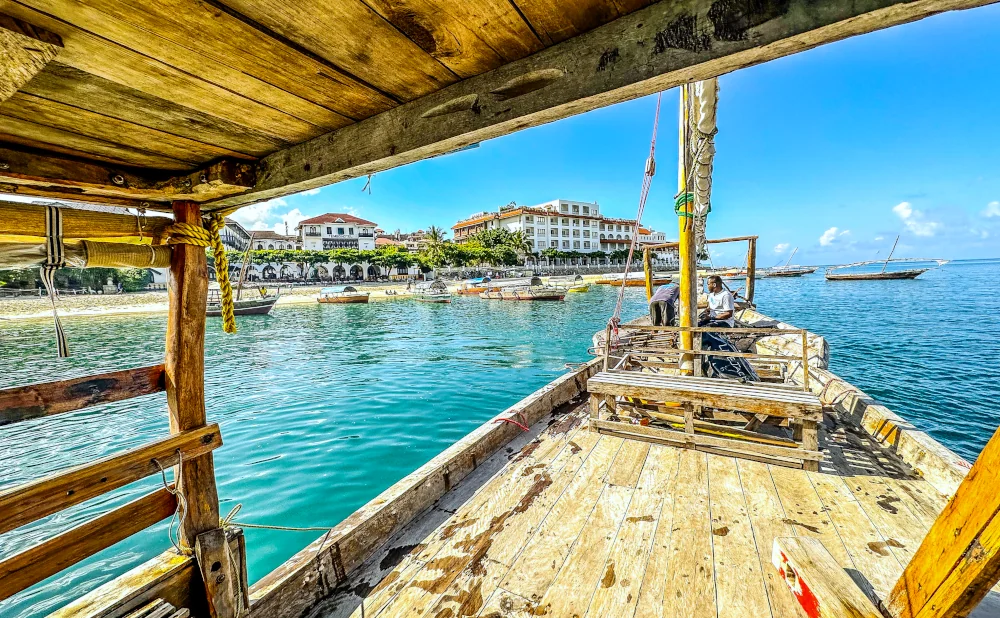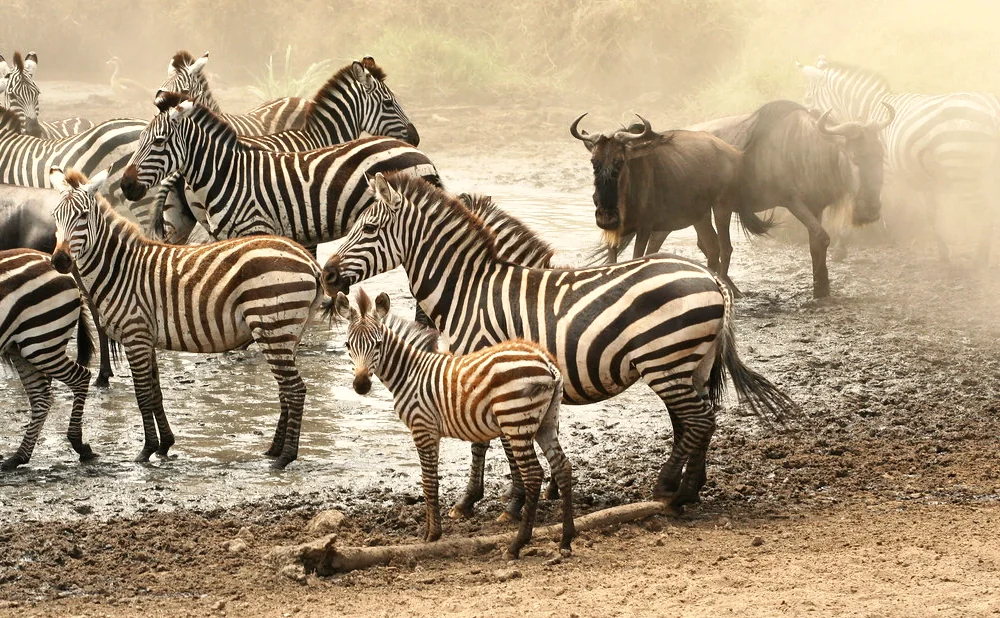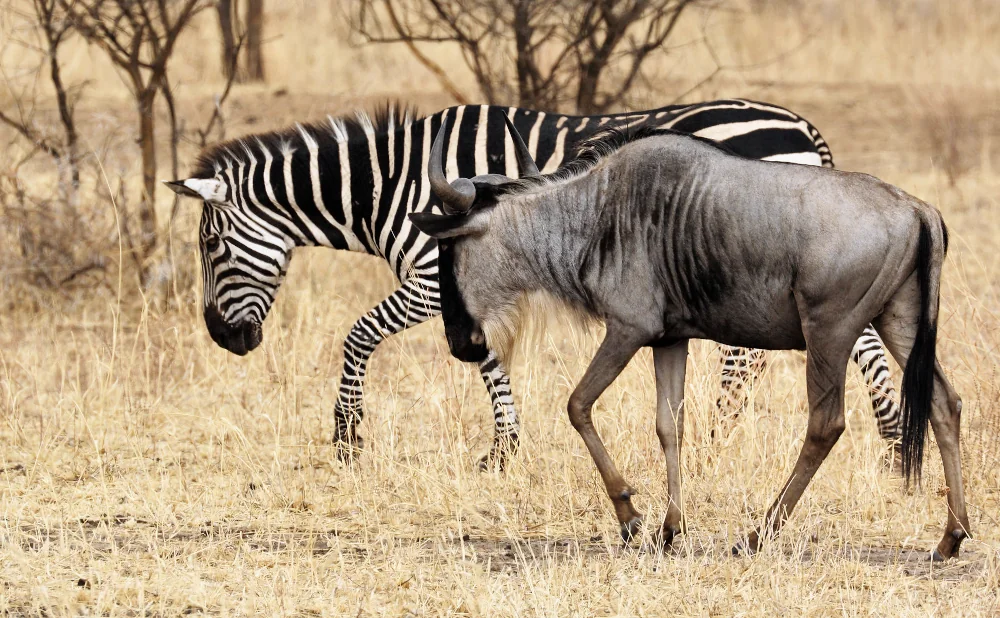how many days in tanzania is enough
Planning a trip to Tanzania can be an exciting endeavor.
This East African country is a treasure trove of experiences. From the vast plains of the Serengeti to the snow-capped peak of Mount Kilimanjaro, Tanzania's diverse landscapes are truly awe-inspiring.
But how many days in Tanzania is enough to fully immerse yourself in its wonders?
The answer to this question is not straightforward. It largely depends on what you want to see and do during your visit.
Are you dreaming of a thrilling safari adventure? Or perhaps you're eager to conquer the heights of Kilimanjaro? Maybe you're yearning for the tranquil beaches of Zanzibar?
Each of these experiences requires a different amount of time.
A standard safari itinerary, for instance, typically spans 7 to 10 days. Climbing Kilimanjaro, on the other hand, can take anywhere from 5 to 9 days. And to truly enjoy the beaches of Zanzibar, you might need at least 3 to 5 days.
But Tanzania is not just about safaris, mountains, and beaches.
It's a country rich in culture, with over 120 ethnic groups each contributing to its vibrant tapestry. A day or two spent visiting local tribes or exploring historical sites can add depth to your Tanzanian journey.
In this comprehensive guide, we'll delve into the details of planning your Tanzania travel itinerary. We'll provide practical advice, suggested itineraries, and tips to help you decide how many days in Tanzania will be enough for you.
Whether you're an adventure seeker, a wildlife enthusiast, a cultural explorer, or a beachgoer, this guide is designed to help you make the most of your visit to Tanzania.
Understanding Tanzania's Diversity and Attractions
Tanzania is a country of contrasts and diversity.
Its landscapes range from the endless plains of the Serengeti to the towering peak of Mount Kilimanjaro. From the sun-kissed beaches of Zanzibar to the bustling streets of Dar es Salaam, Tanzania offers a myriad of experiences.
The country's wildlife is equally diverse.
Tanzania is home to the Big Five: lions, leopards, elephants, buffalo, and rhinos. It's also a birdwatcher's paradise, with over 1,100 bird species recorded. The annual Great Migration, where millions of wildebeest and zebras traverse the Serengeti, is a spectacle not to be missed.
But Tanzania's diversity extends beyond its landscapes and wildlife.
The country is a melting pot of cultures, with over 120 ethnic groups. Each group contributes to the rich cultural tapestry of Tanzania, from the Maasai in the north to the Swahili along the coast.
Here are some of the key attractions that make Tanzania a unique travel destination:
Safaris: Tanzania's national parks and conservation areas offer unparalleled wildlife viewing opportunities. The Serengeti, Ngorongoro, Tarangire, and Selous are among the most popular safari destinations.
Mount Kilimanjaro: The highest peak in Africa, Kilimanjaro is a magnet for trekkers and mountaineers from around the world.
Zanzibar: Known for its white-sand beaches and historic Stone Town, Zanzibar is a perfect place for relaxation and cultural exploration.
Cultural experiences: From visiting Maasai villages to exploring the historic ruins of Kilwa Kisiwani, Tanzania offers a wealth of cultural experiences.
Dar es Salaam: Tanzania's largest city is a bustling metropolis with a blend of modern amenities and Swahili culture.
Understanding the diversity of Tanzania's attractions is the first step in planning your travel itinerary. The next step is to decide what experiences you want to prioritize during your visit.
Planning Your Tanzania Travel Itinerary
Planning a trip to Tanzania can be a daunting task.
The country's diverse attractions and vast size mean that careful planning is essential.
Your itinerary will depend on your interests and the type of experience you desire.
Are you an adventure seeker looking to climb Mount Kilimanjaro? Or a wildlife enthusiast eager to witness the Great Migration? Perhaps you're a beach lover dreaming of the turquoise waters of Zanzibar? Or a culture explorer interested in Tanzania's rich heritage?
Here are some factors to consider when planning your Tanzania travel itinerary:
Interests: Identify your main interests. This will help you prioritize your activities and destinations.
Time: Determine how much time you have. This will influence the number of places you can visit.
Budget: Consider your budget. This will affect your choice of accommodation, transportation, and activities.
Season: The best time to visit Tanzania depends on your planned activities. For example, the dry season is ideal for safaris, while the wet season is great for birdwatching.
The Ideal Duration for a Safari in Tanzania
A safari is a highlight of any trip to Tanzania.
The country's national parks and conservation areas offer some of the best wildlife viewing opportunities in the world.
But how long should you allocate for a safari in Tanzania?
A standard safari itinerary typically ranges from 7 to 10 days.
This allows you to visit several national parks and conservation areas, such as the Serengeti, Ngorongoro, and Tarangire. It also gives you enough time to relax and enjoy the stunning landscapes.
However, the ideal duration for a safari can vary depending on your interests and budget.
For example, if you're a wildlife enthusiast, you might want to spend more time in the parks to increase your chances of spotting rare species. On the other hand, if you're on a tight budget, you might opt for a shorter safari.
Climbing Mount Kilimanjaro: Time Considerations
Mount Kilimanjaro, the highest peak in Africa, is a popular destination for trekkers and mountaineers.
Climbing Kilimanjaro is a challenging but rewarding experience.
But how much time should you allocate for this adventure?
The climb typically takes 5 to 9 days, depending on the route.
The Marangu Route, also known as the "Coca-Cola Route," is the shortest and easiest, taking 5 to 6 days. The Machame Route, or the "Whiskey Route," is more challenging but also more scenic, taking 6 to 7 days. Other routes, like the Lemosho and Northern Circuit, offer a more remote experience and take 8 to 9 days.
Remember to factor in additional time for acclimatization and recovery.
Also, consider your physical fitness and previous trekking experience when deciding on the duration of your climb.
Exploring the Beaches of Zanzibar
Zanzibar, an archipelago off the coast of Tanzania, is known for its stunning beaches and rich history.
It's a perfect destination for relaxation after a safari or a climb up Kilimanjaro.
But how many days should you spend in Zanzibar?
A stay of 3 to 5 days is usually sufficient to enjoy the main attractions of Zanzibar.
This includes exploring the historic Stone Town, relaxing on the beaches, and trying water sports like snorkeling and diving. If you're interested in cultural tours or spice plantation visits, you might want to allocate additional time.
However, the ideal duration for a stay in Zanzibar can vary depending on your interests and the pace of travel you prefer.
For example, if you're a beach lover, you might want to spend a week or more lounging on the pristine beaches and exploring the different parts of the archipelago.
Cultural Experiences and Village Tours
Tanzania's rich cultural heritage is one of its main attractions.
The country is home to over 120 ethnic groups, each with its own traditions and customs.
Cultural tours and village visits offer a glimpse into the local way of life.
These experiences can range from a few hours to a full day. For example, a visit to a Maasai village or a tour of the historic Stone Town in Zanzibar can be done in a day.
However, if you're interested in a deeper cultural immersion, you might want to consider a homestay or a multi-day cultural tour.
This will give you a chance to participate in daily activities, learn
Best Time to Visit Tanzania
The best time to visit Tanzania depends on your planned activities and personal preferences.
The country's climate varies by region and altitude, but generally, it has two dry seasons and two rainy seasons.
Here are some factors to consider when deciding on the best time to visit:
Safari: The best time for a safari in Tanzania is during the dry season, from late June to October. This is when wildlife is easier to spot as animals gather around water sources. The Great Migration in the Serengeti also occurs during this period, with the dramatic river crossings happening between July and September.
Mount Kilimanjaro: While it's possible to climb Kilimanjaro year-round, the best times are during the dry seasons, from January to March and from June to October. These periods offer the best conditions for a successful climb.
Beaches: For beach holidays in Zanzibar and along the Tanzanian coast, the best times are from December to February and from July to October. These months offer sunny weather and warm sea temperatures.
Remember, the "best" time to visit Tanzania can vary depending on your interests, tolerance for crowds, and budget. For example, the rainy seasons, while less popular, offer lush landscapes, fewer tourists, and lower prices.
Accommodation Options: From Budget to Luxury
Tanzania offers a wide range of accommodation options to suit different budgets and travel styles.
For budget travelers, there are affordable guesthouses, hostels, and campsites available. These accommodations often provide basic amenities but are a great way to save money and meet other travelers.
In safari areas, budget options may include tented camps where you can experience the African bush without breaking the bank.
On the other end of the spectrum, Tanzania is home to some of the world's most luxurious safari lodges and beach resorts. These high-end accommodations offer exclusive experiences, gourmet dining, and stunning locations.
Whether you're a budget backpacker or a luxury seeker, you'll find suitable accommodation options in Tanzania to make your stay comfortable and enjoyable.
Transportation and Getting Around
Navigating Tanzania can be an adventure in itself. The country offers various modes of transportation to suit different travel needs and budgets.
For long distances, domestic flights are the quickest and most convenient option. Airlines like Air Tanzania, Precision Air, and Coastal Aviation operate regular flights between major cities and tourist destinations.
Domestic flights: Quick and convenient for long distances
Buses: Affordable but can be crowded and slow
Private transfers: Comfortable and flexible but more expensive
Taxis and bajajis: Ideal for short distances in cities
Ferries and dhow boats: Used for travel between islands
In cities and towns, taxis and bajajis (auto-rickshaws) are commonly used for short distances. For travel between islands like Zanzibar and Pemba, ferries and traditional dhow boats are available.
While public buses are the most affordable option for intercity travel, they can be crowded and slow. Private transfers offer a more comfortable and flexible alternative, albeit at a higher cost.
Regardless of your chosen mode of transportation, getting around Tanzania is part of the adventure and offers a chance to experience the country from different perspectives.
Local Cuisine and Dining Experiences
Tanzanian cuisine is a flavorful blend of local ingredients, traditional cooking methods, and influences from Arab, Indian, and European cuisines.
A must-try dish is Ugali, a staple food made from cornmeal that accompanies most meals. It's often served with Nyama Choma, grilled meat, usually goat or chicken.
For a taste of coastal flavors, don't miss the Zanzibar pizza, a street food delicacy filled with meat, vegetables, and sometimes even sweet fillings for a dessert twist. Dining in Tanzania is not just about the food, but also about experiencing the country's rich cultural diversity.
Safety, Health, and Travel Insurance
Traveling in Tanzania is generally safe, but like any destination, it's important to stay vigilant, especially in cities and crowded places.
Respect wildlife distances when on safari and follow the instructions of your guide. It's also crucial to respect local customs and dress modestly, especially in rural areas and Zanzibar.
Health-wise, consult with a healthcare provider for malaria prophylaxis as malaria is prevalent in Tanzania. Ensure you're up-to-date with routine vaccines, and consider vaccines for Hepatitis A and Typhoid due to potential exposure through food or water.
Vaccines to consider: Hepatitis A, Typhoid, Malaria prophylaxis
Lastly, don't forget travel insurance. It's highly recommended for all visitors to Tanzania. It should cover unexpected travel costs like trip cancellation or interruption, as well as emergency medical expenses, including evacuation.
Budgeting for Your Trip: Tips and Tricks
Planning a trip to Tanzania can cater to various budgets, from backpackers to luxury travelers. The cost of your trip will largely depend on the type of accommodation, transportation, and activities you choose.
For budget travelers, consider shared safari tours and staying in guesthouses or budget campsites. Eating at local restaurants and using public transportation can also help save money.
Budget tips: Shared safaris, budget accommodation, local dining, public transportation
On the other hand, if you're looking for a luxury experience, Tanzania offers exclusive experiences in private conservancies, upscale beach resorts, and fine dining options. Regardless of your budget, remember that Tanzania's currency is the Tanzanian shilling, but USD is widely accepted in tourist areas. It's wise to check the exchange rates before your trip.
Luxury Travel in Tanzania: Exclusive Experiences
For those seeking a more luxurious experience, Tanzania offers a wealth of high-end options. From private safari tours to exclusive beach resorts, there's no shortage of ways to indulge.
Private conservancies, such as the Singita Grumeti Reserves in the Serengeti, offer exclusive safari experiences. Here, you can enjoy game drives with fewer crowds, luxury tented camps, and high-end lodges.
Luxury tip: Private conservancies for exclusive safaris
On the coast, Zanzibar and other islands are home to upscale resorts. These offer private villas, fine dining, and activities like private boat tours or spa treatments.
Luxury tip: Upscale beach resorts in Zanzibar
Whether you're sipping a cocktail by the pool of your private villa or spotting wildlife on a private game drive, luxury travel in Tanzania is sure to provide unforgettable experiences.
Responsible Tourism: Supporting Local Communities
Traveling responsibly is an important aspect of any trip to Tanzania. This involves respecting the local culture, supporting local businesses, and being mindful of the environment.
When visiting cultural sites or villages, it's important to respect local customs and traditions. This includes dressing appropriately and asking for permission before taking photos.
Responsible tourism tip: Respect local customs and traditions
Supporting local businesses, such as staying in locally-owned accommodations or buying from local artisans, can have a positive impact on the community. It's also crucial to respect wildlife and keep a safe distance when on safari.
Responsible tourism tip: Support local businesses and respect wildlife
By traveling responsibly, you can help ensure that Tanzania's unique culture and natural beauty are preserved for future generations.
Final Thoughts: How to Determine the Right Duration for You
Determining the right duration for your Tanzania trip depends on your interests and what you hope to experience. Whether you're a wildlife enthusiast, a culture lover, or a beachgoer, Tanzania has something for everyone.
If you're interested in a safari, a week to ten days can allow you to explore several national parks. For those looking to climb Mount Kilimanjaro, an additional week would be necessary.
Tip: Consider your interests and goals when planning your trip duration
However, if you also want to relax on the beaches of Zanzibar or explore the cultural heritage of the country, you might want to extend your stay. Ultimately, the duration of your trip should provide a balance between adventure and relaxation, ensuring you return home with unforgettable memories.
Tip: Balance your itinerary between adventure and relaxation for a memorable trip
Frequently Asked Questions
Planning a trip to Tanzania can raise many questions. Here are answers to some of the most common queries travelers have.
What is the best time to visit Tanzania? The best time to visit Tanzania for a safari is during the dry season from June to October. For beach holidays, the best time is from December to February or from July to October.
Do I need a visa to visit Tanzania? Visa requirements for Tanzania vary by country. Many travelers can obtain a visa on arrival or an e-visa. Always check the latest information from the official sources.
Is Tanzania safe for tourists? Tanzania is generally safe for tourists, but like any travel destination, it's important to stay cautious, especially in cities. Always respect wildlife distances on safaris and follow local customs.
Planning Your Tanzania Journey
Planning your Tanzania travel itinerary is an exciting process. It's a chance to tailor your journey to your interests, whether they lie in wildlife, culture, or relaxation. Remember, the number of days you spend in Tanzania will depend on what you want to experience.
Take the time to research each destination and consider your budget, travel style, and preferences. Whether you're drawn to the vast plains of the Serengeti, the peaks of Mount Kilimanjaro, or the beaches of Zanzibar, Tanzania offers a wealth of experiences.
In conclusion, there's no definitive answer to how many days in Tanzania is enough. It's all about creating an itinerary that suits you. So start planning, pack your bags, and get ready for an unforgettable adventure in Tanzania.











